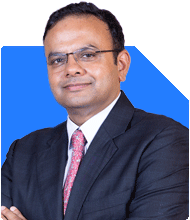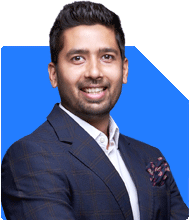Ulhas Joshi |280 Answers |Ask -Follow
Mutual Fund Expert - Answered on Apr 11, 2023
Prior to joining RankMF as CEO, he was vice president (sales) at IDBI Asset Management Ltd.
Joshi holds an MBA in marketing from Barkatullah University, Bhopal.... more

I want to generate a corpus of Rs 1 crore in next 6 years and can save around Rs.25000 pm please suggest suitable plan
You can start investing in:
1-Samco Flexicap Fund- Rs.18,000 per month.
2-Axis Business Cycle Fund-Rs.18,000 per month.
3-Axis ESG Fund Equity Fund Plan-18,000 per month.
4-Edelweiss NIFTY 100 Quality 30 Index Fund-Rs.18,000 per month.
5-UTI MNC Fund-Rs.18,000 per month.
Stepping up your SIP's every year by 10% or more will help you achieve your goals faster.
You may like to see similar questions and answers below
Ulhas Joshi |280 Answers |Ask -Follow
Mutual Fund Expert - Answered on Apr 21, 2023
Abhishek Dev | Answer |Ask -Follow
Financial Planner - Answered on Aug 02, 2023
Kirtan A Shah | Answer |Ask -Follow
MF Expert, Financial Planner - Answered on Nov 13, 2023
Ramalingam Kalirajan |10906 Answers |Ask -Follow
Mutual Funds, Financial Planning Expert - Answered on Apr 27, 2024
Ramalingam Kalirajan |10906 Answers |Ask -Follow
Mutual Funds, Financial Planning Expert - Answered on May 11, 2024
Ramalingam Kalirajan |10906 Answers |Ask -Follow
Mutual Funds, Financial Planning Expert - Answered on Dec 19, 2025
Nayagam P P |10859 Answers |Ask -Follow
Career Counsellor - Answered on Dec 19, 2025
Ramalingam Kalirajan |10906 Answers |Ask -Follow
Mutual Funds, Financial Planning Expert - Answered on Dec 19, 2025
Ramalingam Kalirajan |10906 Answers |Ask -Follow
Mutual Funds, Financial Planning Expert - Answered on Dec 19, 2025
Ramalingam Kalirajan |10906 Answers |Ask -Follow
Mutual Funds, Financial Planning Expert - Answered on Dec 19, 2025
Radheshyam Zanwar |6751 Answers |Ask -Follow
MHT-CET, IIT-JEE, NEET-UG Expert - Answered on Dec 19, 2025
Radheshyam Zanwar |6751 Answers |Ask -Follow
MHT-CET, IIT-JEE, NEET-UG Expert - Answered on Dec 19, 2025
Samraat Jadhav |2514 Answers |Ask -Follow
Stock Market Expert - Answered on Dec 18, 2025
Reetika Sharma |432 Answers |Ask -Follow
Financial Planner, MF and Insurance Expert - Answered on Dec 18, 2025
Reetika Sharma |432 Answers |Ask -Follow
Financial Planner, MF and Insurance Expert - Answered on Dec 18, 2025


























